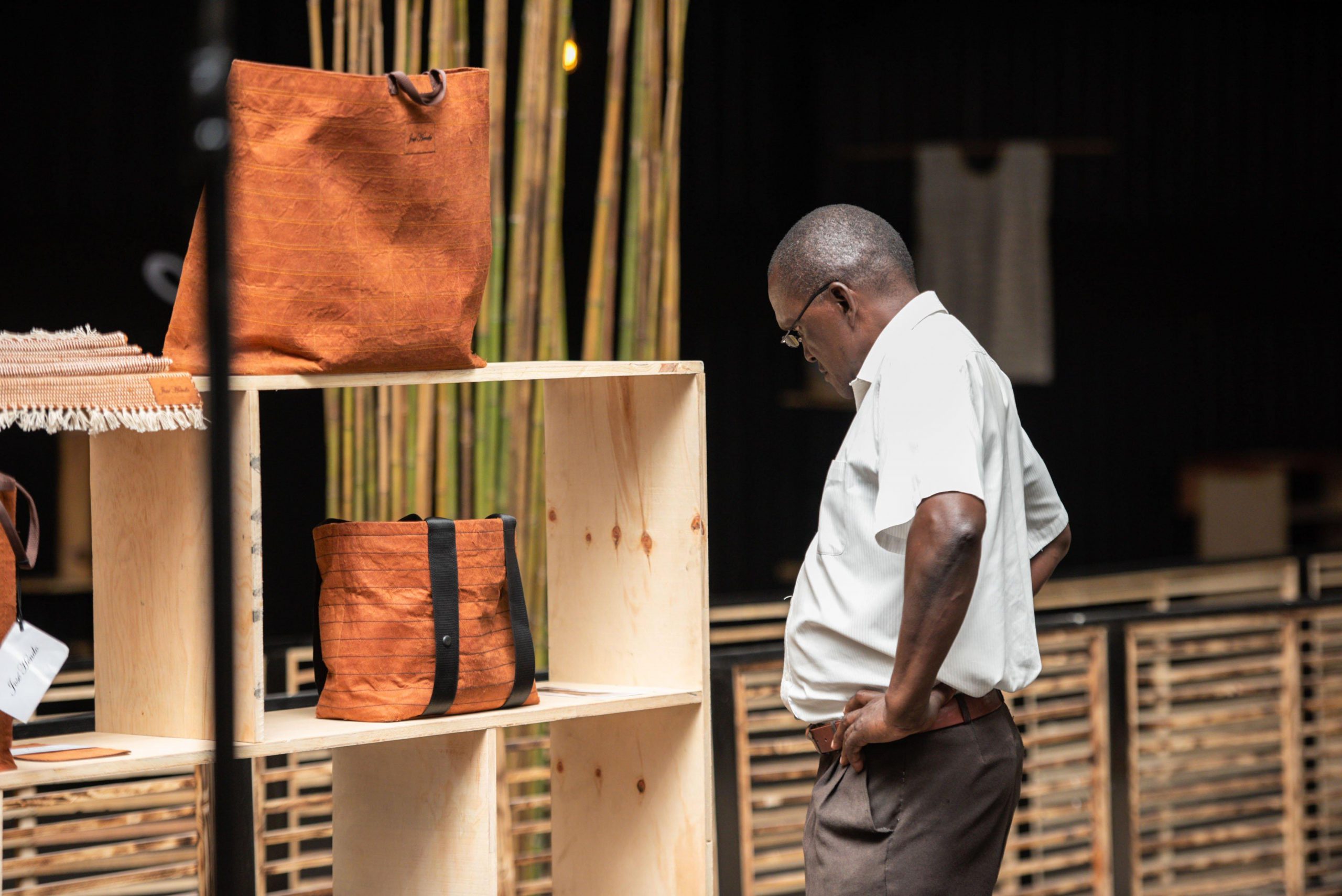Africa-Press – Uganda. Uganda fashion entrepreneurs should add value to their products and collaborate with international brands to find market in foreign countries.
Strolling through the walkway as Ugandan fashion designers were showcasing their designs at the MoTIV Village in Bugolobi, was alluring. The sight of artistic lights and decorations carefully embodied from African fibre and fabric was impressive.
These were used to make African fashion designs which were displayed from the entrance during the ‘Fibre to Fabric textile exhibition held in December.
Whereas fibre is a thread from which a vegetable tissue, mineral substance or textile is formed, a fabric is a material made through weaving, knitting, spreading, stitching, crocheting or bonding that may be used in the production of further products such as clothing.
The designs showcased represented the beauty of adding value to Uganda’s fiber and fabric to promote the use of indigenous textile materials to drive up demand.
African textiles are among the major forms of expression for African identity. They are also a means for to acquire insight into the religious, social, political and economic complexities of many African communities whose sophisticated cultures may otherwise remain unknown.
In Africa, printing, weaving and dyeing textiles is a craft providing income for many artisans.
Ms Jeniffer Nyiraneza, Ambassador, International Federation of Interior Architects in Uganda (IFI), says the textile exhibition was aimed at educating entrepreneurs about the fashion and design industry.
A fashion designer makes a blouse from local materials at MOTIV in Bugolobi. PHOTO/courtesy
“The products made using traditional techniques as a form of both cultural preservation and modern innovation can be used to add value to the products where the Uganda products are used globally in the supply chain of the fashion industry,” Ms Nyiraneza says.
This promotes use of indigenous materials and encourages demand for local materials. These small scale semi industrial enterprises can run lengths of anything from 200 metres to 1,000 metres to special order.
The products can be used for retail sales or developed further into fashion garments, furnishing textiles or home décor items. These all can be traded through the use of technology especially Google.
However, if fashion designers remain mediocre, they will not find markets for their products. This comes as a result of a number of people who tend to confuse Google as a place to copy rather than an investment and marketing hub to showcase products.
“When we add value to our products and market them on Google, we can compete internationally,” she says, adding that this requires a lot of research.
Research and learning how to collaborate are key if one is to become part of the competitive ecosystem.
“It is believed that the use technology can generate about $1.3 billion by 2026. How many Ugandans can position themselves to earn from this, especially from the different fiber and fabrics?” she wonders.
She urges designers to produce quality products while challenging Ugandans to embrace local brands to create a future for them.
Tapping into foreign markets
Mr Ore Smith from Obelisk says Ugandans can tap into the foreign market through creating linkages.
“We want to bridge the gap between Ugandan products and the local market and export them which can be done through creating buyer linkages,” Mr Smith says.
This has been done for some designers who have already found buyers in Denmark where two of our designers are going to start exporting their products to Europe.
“It is through events such as exhibitions that we expose to the world what Uganda’s fashion industry has to offer,” Mr Smith says adding that MoTIV is a great place to take that chance. They have the right network, packaging and machinery.
But government has not done much in marketing local textiles because it is still working with colonial laws.
He says: “Uganda can surpass Nigeria, Ghana even Ethiopia which all have established textiles traditions. Uganda has the same fold of textile like Egypt which sells 1,000 thread rolls for $5/6,700 a piece.”
However, the major problem lies in exporting raw cotton.
“We export cotton in raw form and that we do not do value addition. Only 5 per cent of our cotton gets turned into products here, the rest is exported for Shs50,000 when the potential value if we add value is approximately $10,000,”he explains.
He says Uganda exports 256,000 kilos of cotton every year. “If we turn all that into T. shirts alone, we can make over $2 billion a year. That $2 billion is being exported to Bangladesh, Turkey and China. If we use our own factories, skill our own people, we can share in that wealth,” Mr Smith explains.
A 2019 report by the Ministry of Trade states that Uganda is a cotton producing country that has recorded an annual production of 254,000 bales as the highest output in the last five years with the potential of producing 1,000,000 bales at full potential.
However, more than 90 per cent of the lint produced in Uganda is exported at less than $1 (Shs3,700)per kilo, resulting in loss of value to Uganda. The conversion of such lint translates into 8 to 10 fold growth in value when conventional cotton is processed into garments while for organic cotton, the value can grow to 15 fold.
Challenges
Ms Nina Mirembe, executive director at NinaMire’Fashion, cites her biggest challenge as importing cotton from China to knit her products.
Mr Gary Murungi, the owner of Legacy, says the digital platform has enabled the brand win a contract and concept of designing clothes and T-shirts for the London brand that deals with mental illness.
Ms Nina Mirembe, executive director at NinaMire’ Fashion.
I spend a lot of time knitting swim wear out of crotchets. Those that do not understand the sweat do not value my work which forces me to market my products internationally.
Ms Gary Murungi, the owner of Legacy, a fashion brand
With technology, Ugandan products can favourably compete on the international market.






